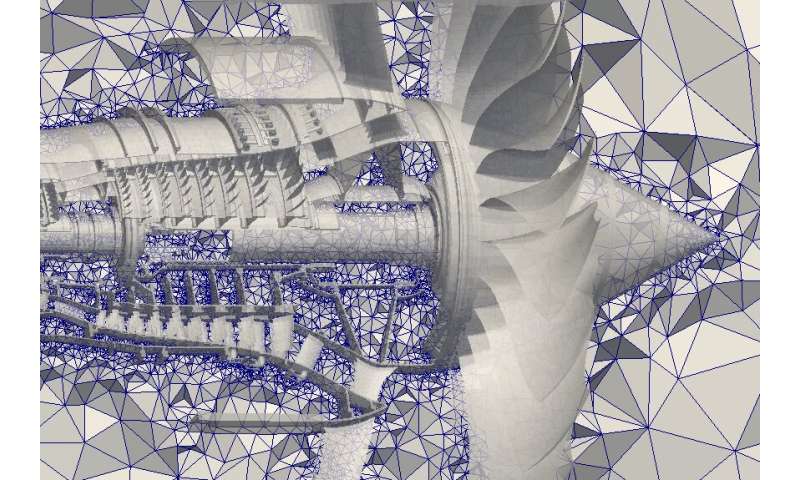
Electromagnetic fields in magnetic resonance imaging, groundwater flows, charge carriers in semiconductors and numerous further spatially distributed physical processes have one thing in common: they can be modeled by means of partial differential equations. The solution for such complex mathematical equations can usually not be obtained as a mathematical formula. Therefore, computer-based approximation methods are applied. In order to calculate these, the respective spatial domain must be divided in an intelligent way into a finite number of simple subdomains (e.g. tetrahedra).
The calculation of such partitions with certain necessary specifications regarding size and shape of the tetrahedra is a highly complex algorithmic problem, which is internationally only mastered by a few research groups. Research on these types of problems has been successfully accomplished at the Weierstrass Institute for about 20 years now under the supervision of Dr. Hang Si. In addition to numerous publications in high-ranking scientific journals, the most important result was achieved by developing the software TetGen, which allows a very precise and efficient calculation of these tetrahedral decompositions. TetGen is available to the international research community under an open source license just like the operating system Linux or the web browser Firefox.
Additionally, the Weierstrass Institute concludes license agreements that allow commercial users to integrate TetGen into their programs. As a result, leading international companies such as Wolfram Research, Google and Tera Analysis are benefiting from TetGen. The latest research results in this area are immediately put into practice in a wide variety of application areas such as image processing, animations for films or gaming, and for the calculation of electromagnetic fields and other physical quantities in complex electronic components. Moreover, the revenues generated are used to further intensify research in this area.
With TetGen 1.6, the Weierstrass Institute has now released a new version that allows a significant improvement of the generated grids while reducing the necessary computing time. This quality enhancement was achieved in particular by implementing new core algorithms based on recent research results.
Institute Director Prof. Dr. Michael Hintermüller emphasizes: “The leap in quality of the enhanced grid generator is immediately visible to the user and along with the remarkable speed of the algorithms it pays off right from the start.”